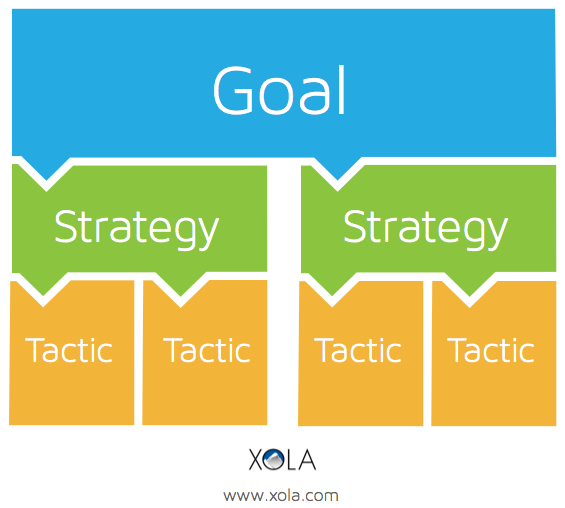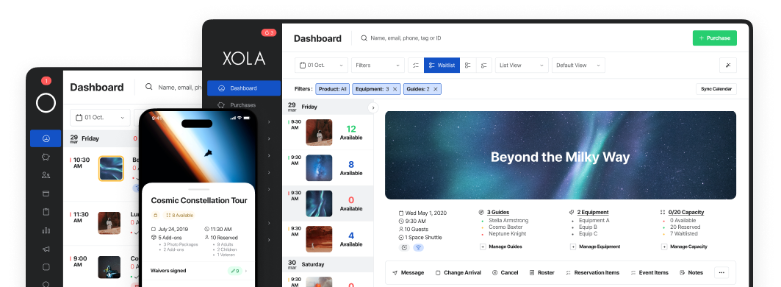
Zipline and challenge course operators should be thinking about setting new business goals well before high-season.
A clear business goal creates a target for you to aim at, and informs your zipline marketing plan. Well constructed goals are observable and measurable, making it easy to understand if your challenge course or zipline marketing efforts are working or not.
Clear goals also help define how you market your zipline or challenge course.
In other words, your goals define your strategy. And your strategy defines the marketing tactics you use.

For example, a newly opened zipline might be more concerned with turning a profit than with expanding too rapidly. Because they’re focused on becoming profitable, they will have a more cost-neutral strategy. They will want to pursue more low-cost marketing tactics that help bring in new business without burning too much cash.
A challenge course that’s expanding their park, on the other hand, might be more concerned with filling seats in a newly opened course. Because of this, they might be ok with investing the profits from their other activities to pursue a more aggressive growth tactic, like pay-per-click advertising.
Regardless of how new your aerial adventure business is, or what you’re trying to achieve, every business goal should be SMART:
- Specific – Does your goal refer to a concrete and specific area of your business? (e.g. revenue)
- Measurable – Can you measure your goal using quantitative or qualitative data? Can you measure your progress using a measurable target? (e.g. 25% increase in revenue)
- Attainable – Can you (or your employees) actually achieve this goal?
- Relevant – Does the goal apply to a specific problem faced by the company?
- Time-related – What is your deadline for achieving your goal?
Example of a SMART goal:
2x monthly revenue by the end of Q4 (December 31st).
Example of a not-so-smart goal:
Grow my business.
Keep in mind that your SMART goal does not have to be perfect. There is still guesswork involved. But if your goal is SMART, you can measure your progress against your goal. You will know when to change course if you begin to veer off track or aren’t making progress. And you will know when to turn up the heat if things are going well.
More resources:
- Challenge Course and Zipline Marketing 101: How To Create a Marketing Plan
- 5 Simple Ways to Get Your Zipline or Challenge Course on the First Page of Google Search
- 10 Ways to Optimize Your Challenge Course or Zipline Website for More Online Bookings
- The Unexpected Trick to Triple Your Zipline and Challenge Course Reviews



